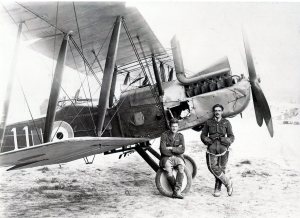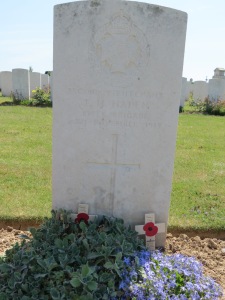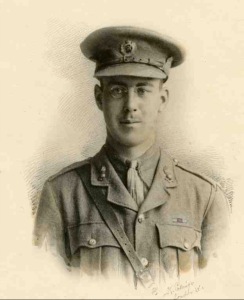| 22nd April 1918
Edward Balme, MC. A Social 1899. Lt, 11th Bn Essex Regt
Died of wounds received in an unknown engagement
He was a prefect who played for the 1st teams for football and rowing. After school he trained at St George’s Hospital but did not continue with a medical career. He joined up as a private with the Honourable Artillery Company in September 1914.
In 1915 he was given a commission in the Essex Regt., and went to Gallipoli where he won the M.C. for gallantry at Sulva Bay, and was mentioned in despatches by Sir Charles Munro. Later he served in Egypt, and then in France, being invalided home in 1917. In March, 1918, he went to France again, and was mortally wounded on April 21st near Ypres, and died of wounds the next day.
Aged 33
AND
Frank Harston, MC. Don
Captain, East Lancashire Regt. Killed in action in an unknown engagement
Citation for the Military Cross. Lt. (temp. Capt.) Frank Northey Harston, E. Lanc. R. He rendered most valuable service as Brigade Major during the advance. When a gap occurred he proceeded at great risk of capture and under continuous fire to rectify matters before daylight. He set a magnificent example throughout.
He was educated at Highfield Preparatory School, Liphook (then Southampton), and Eastbourne College, and at both was head of the school. He went to Corpus Christi College, Cambridge, where he obtained a scholarship, and took first class Classical Honours. After leaving Cambridge he was at different times assistant master at Clifton College and Radley College. At the outbreak of war he joined the Public Schools Brigade, but in October, 1914, was gazetted to a commission in the Leicestershire Regiment, with which he proceeded to France in July, 1915, as captain and adjutant. In January, 1916, he was appointed to the General Staff of a Division and almost at the same time was granted a regular commission. In February, 1917, he was promoted and appointed brigade major of an infantry brigade, in which capacity he was serving at the time of his death. He had been twice mentioned in dispatches and in May of last year was awarded the Military Cross.
The modern battlefield has proved a strange school of poets, and the love of nature was never more intimate and more real, than in this nightmare of destruction and rampant mechanism. There were two men here, whom we knew well, richly endowed with that quality, – not a rare one, perhaps, but often disguised, – the love of Earth: I mean Frank Harston and his friend Lance Vidal. The official notice of his death, in our last number, reveals nothing of the man: I can, at least, say something of my own knowledge of him as a friend.
Both these men as we knew them were sane, sterling, generous souls, devoid of affectation and vanity. Such men are not as they had never been; something endures in the consciousness of everyone who associated with them.
When nearly every incident of the past is forgotten, a few luminous scenes remain, clear in the memory, like sunlight striking on a distant hill. I remember fishing with Harston, near Bablockhithe, one afternoon in summer. He was a gay and delightful companion, as he was, I imagine, punctilious and strict in form: for he did nothing by halves. Last April he wrote to me expressing the wish that we should one day go fishing together again; and his letter recalled the whole scene most vividly, – the mown grass lying in swathes by the stream, the conversation we had sitting in the inn-garden, and the ride home in the dusk.
Personally, I shall always remember him and Vidal as men who loved earth and the sun, and who, full of the joy of living, were not afraid to enter the enchanted “Woods of Westermain,”-the mystery in nature. In Memoriam Frank Harston
Aged 28 |
 Lt Edward Balme |
























